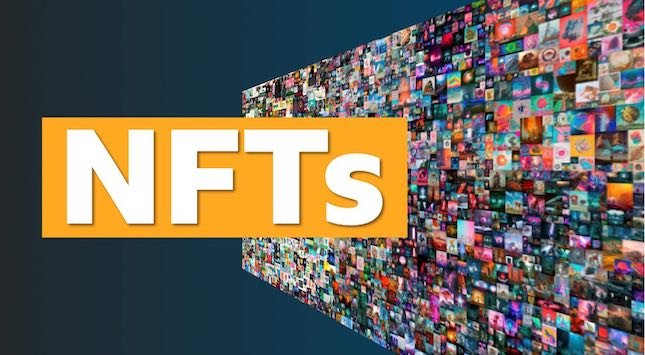Everyone is seeking fresh and better ways to trade NFTs as they grow more and more relevant in art and entertainment. Here is all the information you require to build your own NFT marketplace if you have the solution but are unsure of where to begin.
The creative and entertainment industries are getting more and more interested in non-fungible tokens (NFTs). NFTs facilitate the exchange of digital assets between parties and the protection of intellectual property for creators, collectors, and owners through the use of blockchain technology. As a result, producers, fans, companies, and investors are all searching for fresher and more effective ways to exchange NFTs.
Launching your own NFT marketplace makes a lot of sense whether you’re an artist, game developer, or blockchain developer. Understanding how NFT marketplaces operate will help you build your own platform to stand out from the competitors, regardless of your aims.
Let’s explore the specific steps involved in creating an NFT market.
The Foundations of NFT Markets
The non-fungible token market reportedly reached $22 billion in 2021, up from an estimated $100 million in 2020, according to the most recent economic projections. The fact that there are no signs of this expansion slowing down makes it even more intriguing.
NFTs are a byproduct of the blockchain and cryptocurrency technologies that underpin Web 3.0, the next generation of the Internet (Web3). A similar kind of Web3 application is an NFT marketplace. Although it focuses on NFT sales, it operates similarly to a conventional Internet marketplace.
Anyone with a working cryptocurrency wallet can buy NFTs or advertise NFTs for sale on an NFT marketplace. NFT marketplaces can be accessible to the public, semi-private, or private (anyone can buy, but only authorised vendors can list NFTs) (open only to select members).
Reasons to Create Your Own NFT Marketplace
Although among the first of their kind, the current NFT trading applications have certain disadvantages. For instance, because the majority of NFT marketplaces now use the Ethereum blockchain, ETH is the only money that can be used on these platforms. You will be required to pay conversion costs if you wish to use a different coin.
You can create a platform with unique features or one that addresses issues that might exist in the more well-known NFT markets by creating an NFT marketplace. You have the option of selecting the cryptocurrency that will be the platform’s base or selecting a certain market.
You could also decide to make an exclusive platform or one that is accessible to everyone. Perhaps you have an idea for a feature that would improve the market, or perhaps you believe you can create a platform or user experience that will benefit people more.
There are several chances to create a game-changing app because the NFT sector is relatively young. There’s still a fair potential that someone will develop an NFT marketplace application that can compete with the current leaders thanks to innovative new features or the ideal arrangement of features and aesthetics.
Who You Should Target With Your NFT Marketplace
If you want to operate an NFT marketplace as a personal business, you must first identify the target market for your marketplace. As more people make, buy, and sell things, the need for a reliable and secure NFT Marketplace Development Company will increase. Before your NFT marketplace is even developed, focusing on a certain consumer segment may be what makes your application stand out.
A public market
A public app can be the best option if you want to create a general-purpose NFT marketplace where various artists and buyers can interact and trade. Anyone can sign up for the public model, post NFTs for sale, and buy or bid on auctions for listings.
Public markets have the potential to be very successful, but you should also anticipate fierce competition. Public marketplaces already exist, thus the only way to differentiate yourself from the competition is to provide an improved user experience with unique features and services.
The semi-private market
A semi-private store can be the greatest option if you’re an artist who wants to sell your own works of art as your main source of income. Semi-private marketplaces are essentially online shops where you (and users you select) are the only ones who may post items for sale. Although anyone can register an account, the ordinary user is usually only allowed to play the role of a buyer.
Although semi-private applications have restrictions on who can sell NFTs, you have more power over the calibre of the listings that are uploaded. This offers the storefront a feeling of exclusivity and might reassure customers that the work will be of greater quality and worth.
Privately owned market
Like a semi-private app, a private marketplace limits both who can publish listings and who may register as a buyer. You have the most control over who can trade on your platform even though this approach is the most challenging to promote.
If you want to construct a market tailored to a particular group or organisation, the private marketplace technique would be ideal. If you need to develop a client screening procedure and curate your consumers, this strategy is also appropriate. For instance, it can be required if you want to develop a market that exclusively specialises in the auction of expensive NFTs.
The Best Way to Create an NFT Marketplace
Make a list of the features and functions your application will have before you start the development process. Although you should be in charge of the UI, design, and distinguishing features, you must make sure your marketplace contains the fundamental characteristics required to operate an NFT marketplace.
The following are basic NFT marketplace features:
- The capability of setting up user profiles and accounts.
- Simple access to the user’s associated wallet’s cryptocurrency balance.
- A straightforward method for consumers to view all of the NFTs they currently possess in their associated wallet.
- A display window for all the available NFTs for purchase.
- A search engine that enables people to hunt for particular NFTs.
- Users can utilise filters to browse by type, features, artists, and other criteria.
- Users’ capacity to produce new listings.
- A listing of the user’s most recent NFT sales and acquisitions.
Before beginning the creation of your NFT app, think about making a mockup of your marketplace. You may picture what the final app will look like with the help of mockups, which are a useful prototyping approach.
With the help of such tools, you can design and arrange UI elements (such as buttons, photos, bars, and text) and simulate how the app will appear when it is ready for deployment. Create many draughts, conduct testing, and iterate your designs until you find one that has the functionality your market requires while remaining user-friendly and fulfilling.
Development Method
The development process can begin once the target audience, visual style, and feature set of your application have been determined.
Making a thorough project specification paper is the first step. For two reasons, project specification documents are essential: They communicate the project’s vision and intentions to your development team and provide them with a detailed list of goals and features to build.
Finding app developers is the next step. You’ve already made some progress if you have an internal development team. If not, you will need to hire experts who are knowledgeable about blockchain development to complete the project.
Get Your NFT Marketplace Online
As you can see, creating an NFT marketplace requires a lot of work, and that’s before you have to think about planning the launch. You need to have a launch strategy in place months before the product is released, even if the market is functional.
Although your strategy will need more specifics, user support and marketing will be two important launch strategy components. You must create a strategy to increase exposure and draw in new users. Additionally, you must be prepared to address any difficulties users may have.






